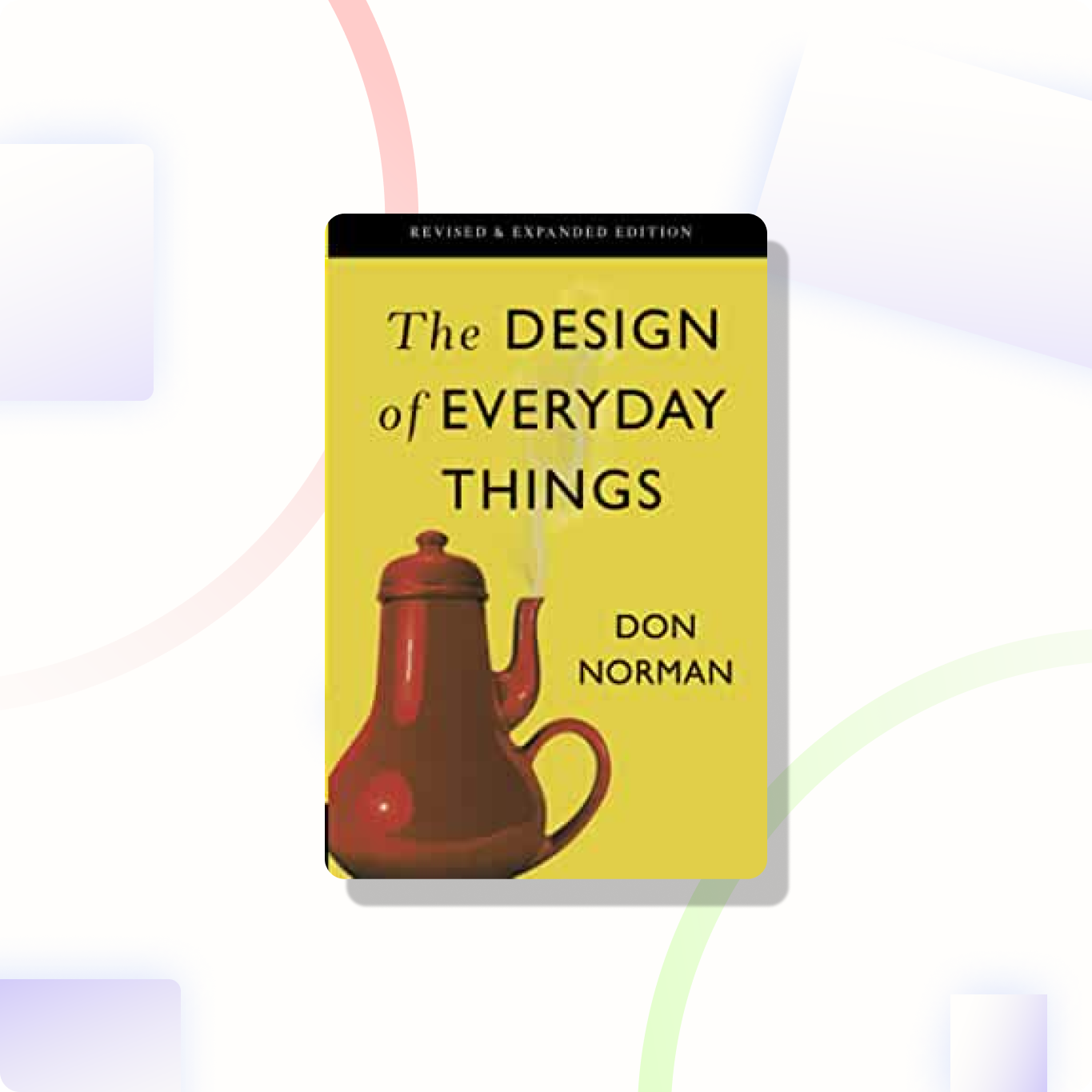Book Summary of The Design of Everyday Things by Don Norman
About The Book
“The Design of Everyday Things” by Don Norman explores the principles and psychology behind good design, focusing on the interactions between people and the products they use daily. Norman delves into the concept of affordances, signifiers, and mappings, illustrating how design impacts usability, user experience, and human behavior. The book emphasizes the importance of user-centered design, providing practical insights and guidelines for creating products that are intuitive, functional, and enjoyable to use.
Important Lessons from the Book
- Concept of Affordances: Design products with clear and intuitive affordances that suggest their functions and how to interact with them.
- Signifiers and Feedback: Incorporate visible and understandable signifiers to guide users and provide immediate feedback on their actions.
- Mapping and Visibility: Ensure the relationship between controls and their effects is clear, creating a logical and visible mapping that matches user expectations.
- Mental Models: Consider users’ mental models and design products that align with their expectations, reducing cognitive load and facilitating ease of use.
- Error Prevention and Recovery: Anticipate user errors and design systems that prevent mistakes, or provide clear and simple recovery paths.
- Simplicity and Minimalism: Strive for simplicity in design, eliminating unnecessary complexity and focusing on essential features that serve users’ needs.
- Iterative Design and Testing: Continuously test and iterate designs based on user feedback, observing how users interact with products and refining them accordingly.
Mistakes to Avoid suggested by Author
- Lack of Discoverability: Avoid designing products that are difficult to understand or lack clear cues for interaction, causing frustration and usability issues.
- Inconsistency in Design: Maintain consistency in the design language and interaction patterns across different parts of the product to enhance user understanding and efficiency.
- Overwhelming Complexity: Beware of overwhelming users with too many features, controls, or options. Strive for simplicity and focus on the most critical functionalities.
- Hidden or Poorly Labeled Controls: Prevent confusion by ensuring controls are visible, labeled appropriately, and their purpose is easily understandable.
- Neglecting User Feedback: Do not disregard user feedback or dismiss usability issues. Actively seek user input and incorporate it into design iterations.
- Lack of Accessibility: Design products that are accessible and inclusive, considering the diverse needs and abilities of users.
- Ignoring User Testing: Avoid skipping user testing and relying solely on assumptions. Incorporate user testing throughout the design process to validate and refine design decisions.
Essential Action Steps
- Understand User Needs: Conduct user research to gain insights into user behaviors, needs, and pain points, ensuring design decisions are user-centered.
- Apply Affordances and Signifiers: Incorporate clear and intuitive affordances and signifiers in the design to communicate functionality and guide user interactions.
- Prototype and Iterate: Create prototypes to test and refine design concepts, iterating based on user feedback and observations.
- Conduct Usability Testing: Regularly perform usability testing to evaluate how users interact with the product and identify areas for improvement.
- Emphasize Consistency: Maintain consistency in the design language, interaction patterns, and visual cues throughout the product to enhance user understanding and efficiency.
- Prioritize Simplicity: Simplify the user interface, eliminate unnecessary complexity, and focus on the core features and functionalities that address user needs.
- Iterate Based on User Feedback: Continuously collect and incorporate user feedback throughout the design process, iterating and refining the product based on real-world usage.
The conclusion from the Book
“The Design of Everyday Things” by Don Norman highlights the importance of user-centered design and provides valuable insights into creating products that are intuitive, functional, and enjoyable to use. By incorporating principles such as affordances, signifiers, and mappings, and avoiding common design mistakes, companies can enhance user satisfaction, usability, and overall product experience. Norman’s book serves as a comprehensive guide for designers, engineers, and anyone involved in the creation of everyday products, reminding us of the impact that thoughtful design can have on our daily lives.

 WATCH HELLOPM COHORT IN ACTION
WATCH HELLOPM COHORT IN ACTION


